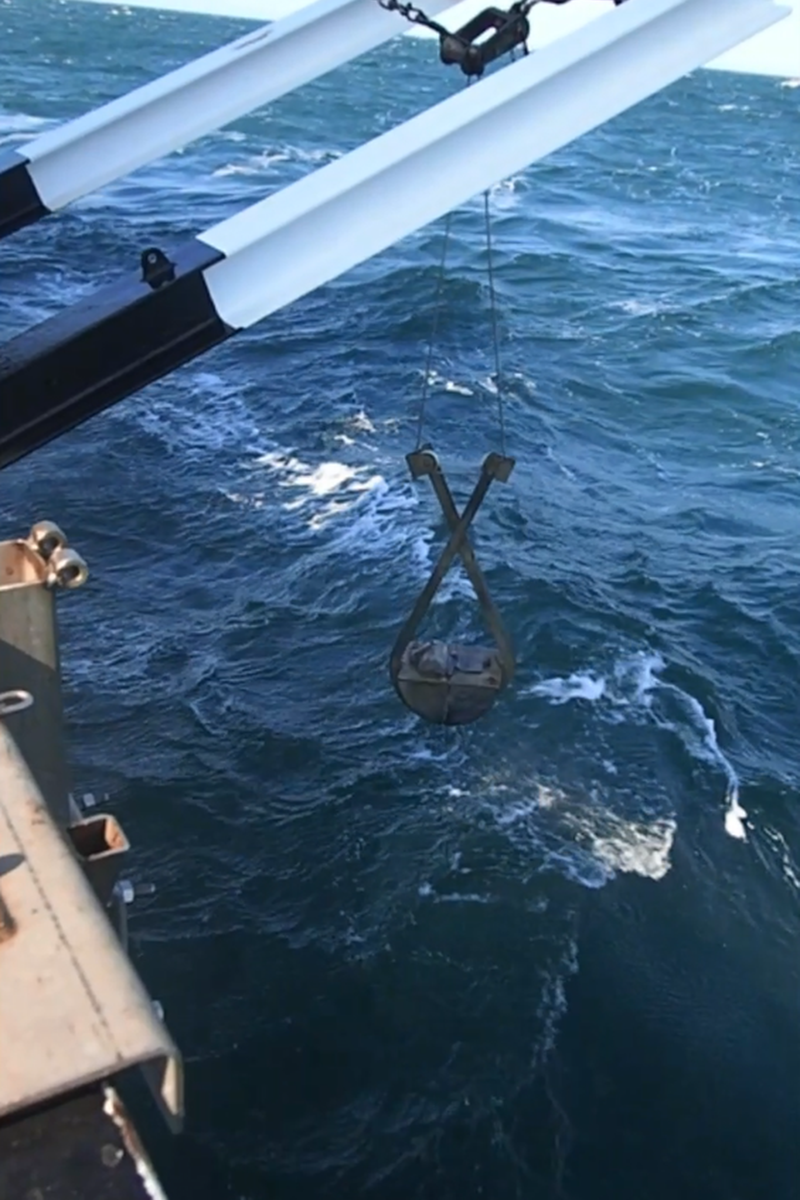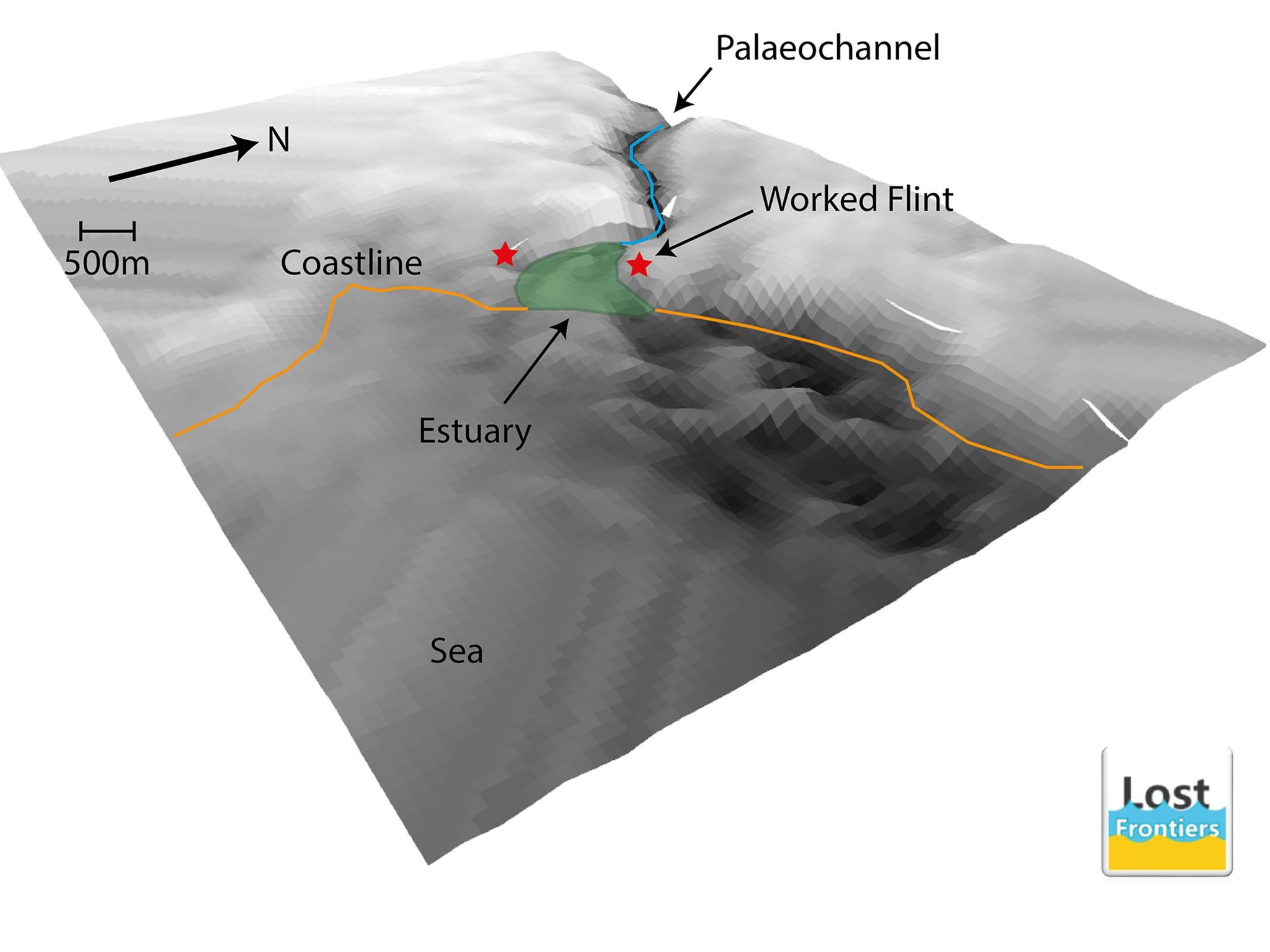Britain’s Atlantis: Evidence of Stone Age human activity found beneath North Sea
Exclusive: Two potential prehistoric settlement sites on the banks of a long-vanished ancient river

Your support helps us to tell the story
From reproductive rights to climate change to Big Tech, The Independent is on the ground when the story is developing. Whether it's investigating the financials of Elon Musk's pro-Trump PAC or producing our latest documentary, 'The A Word', which shines a light on the American women fighting for reproductive rights, we know how important it is to parse out the facts from the messaging.
At such a critical moment in US history, we need reporters on the ground. Your donation allows us to keep sending journalists to speak to both sides of the story.
The Independent is trusted by Americans across the entire political spectrum. And unlike many other quality news outlets, we choose not to lock Americans out of our reporting and analysis with paywalls. We believe quality journalism should be available to everyone, paid for by those who can afford it.
Your support makes all the difference.Archaeologists have found evidence of ancient human activity on Britain’s very own “Atlantis”.
Scientists investigating a drowned Stone Age landscape at the bottom of the North Sea have discovered two potential prehistoric settlement sites on the banks of a long-vanished ancient river.
It is the first time that an archaeological expedition has ever found such evidence far offshore under the huge body of water.
In the past, prehistoric artefacts have on occasions been trawled up by fishermen and found by oil exploration teams – but the seabed contexts they came from were never archaeologically assessed.
This time, the discoveries are part of a systematic archaeological survey.
The archaeologists – from Britain and Belgium – have found two highly significant stone artefacts in specific locations which were being deliberately investigated for ancient human activity.
Scientists, who have studied the distribution of ancient human activity and settlement sites on land, applied their knowledge to the drowned Stone Age landscape of Britain’s North Sea Atlantis – and rapidly struck archaeological “gold”.
The two stone artefacts – recovered in two seabed sediment samples (each of just over a cubic foot) from target seabed sites (25 miles north of Blakeney, Norfolk) – don’t look visually impressive. But they are, for the very first time, enabling archaeologists to home in on what is likely to be Stone Age settlement sites that were swallowed up by the sea in around 6000 BC.
The potential settlements themselves – on opposite sides of an ancient river estuary – are even older – probably dating from between 8200 and 7700 BC.

The archaeologists - from the universities of Bradford and Ghent – have also discovered evidence explaining precisely why the Stone Age humans were so attracted to these two particular locations.
The pollen and other environmental evidence being recovered from around the two sites show that the Mesolithic hunter-gatherers, who were active there, had easy access to more than half a dozen different landscape zones, each with different resources to exploit.
Marshland with rich reed beds provided opportunities to hunt large waterfowl, collect eggs and gather reeds for making baskets and fish traps.
Inter-tidal mud flats and gravel beaches each provided access to different species of nutritious shellfish – and plentiful grey and common seals would have provided a seasonally rich source of very high-protein meat and fat.
Salt-marsh grassland would have attracted deer, elk and giant wild cattle (aurochs), which in turn would have provided a crucial supply of year-round meat to local humans.
Slightly higher and dryer land, overlooking the river estuary, was covered with hazel trees – yielding not only nuts, but also wood which was ideal for arrow manufacturing.

And a walk upstream along the river would have given the inhabitants access to large numbers of freshwater fish.
The gently undulating chalk topography that formed the hinterland to both potential settlements would have had springs and small streams for drinking water.
Last, but certainly not least, was a crucial geological resource on the western side of the estuary. For there, a layer of flint-bearing chalk lay at the old ground surface, providing fresh flint for the population to make their tools from.
The two artefacts which the archaeologists have discovered offer a clue as to what the Stone Age locals were doing there.
On the western side of the estuary, where the chalk and flint geological outcrop is located, the archaeologists found a fragment of an unusually large hammer stone – a tool used to break larger flint nodules into more suitably-sized fragments for subsequent transformation into proper tools.
Stone tool experts believe that the hammer stone fragment accidentally broke off the original hammer stone while it was being used to produce such embryonic artefacts.
It strongly suggests that the site was being used as a tool-manufacturing base.
The scientists have worked out that the original hammer stone, that the fragment broke off from, was probably grapefruit-sized, weighing in at about one kilo.
The fragment itself – just five centimetres long and six millimetres thick – however still preserved evidence that the hammer stone, that it had come from, had already been heavily used. The upper part of the fragment was covered with dozens of impact marks – evidence of how the original hammer had been used in the initial stages of making many tools.
It’s likely that the subsequent, more refined stages of tool manufacture also took place at the site.
On the other side of the now long-vanished estuary, the archaeologists found their second artefact – a tiny one centimetre long, two millimetre thick flake struck off a large piece of flint during tool manufacture. It too demonstrates that tool-making was occurring on the banks of the estuary.
Now archaeologists are planning the next phase of their underwater investigation.
First, they will send an unmanned mini submarine to further investigate and film the seabed at both locations.
It’s then conceivable that the mini submarine will use its robotic arms to recover any relevant ancient objects, visible on the seabed.
Finally, they may send divers 32 metres down to the seabed to carry out proper excavations there.
The challenges involved in investigating at the bottom of the North Sea are immense. So it is conceivable that the investigation may last several years.
The discoveries are particularly important because it’s usually impossible to find former coastal sites of that age on dry land. That is because the partial melting of the Ice Age ice sheets at the end of the last glaciation led to a massive rise in sea levels worldwide.
Back in the Stone Age, as people still do today, very significant proportions of the population lived on the coast (where resources were often more plentiful) – and so their ancient habitats now lie, more often than not, at the bottom of the sea.
The Stone Age landscape, submerged when the North Sea was formed, is one of the largest such drowned landscapes on Earth.
In terms of more fully understanding the cultural evolution of humanity, the current investigation of Britain’s Atlantis is therefore particularly important.
“Our ongoing research will hopefully enable us to reconstruct what life was like on more than 100,000 square miles of former land under what is now the North Sea and the Irish Sea, before it was inundated by sea level rise 10,000 to 7,000 years ago,” said a key archaeologist involved in the project, Dr Simon Fitch of the University of Bradford.
The North Sea expedition was led by Belgian geophysicist, Dr Tine Missiaen of Ghent University and the Flanders Marine Institute, in collaboration with Bradford University’s “Europe’s Lost Frontiers” drowned landscapes project, led by archaeologist, Professor Vincent Gaffney
Key to the success of the expedition was the participation of the Belgian Navy which allowed its research vessel “RV Belgica” to be used by the archaeologists and geologists.
The expedition was funded by the European Research Council under the European Union’s Horizon 2020 research and innovation programme.
Join our commenting forum
Join thought-provoking conversations, follow other Independent readers and see their replies
Comments